Zotero vs Papers: Which reference manager is better?
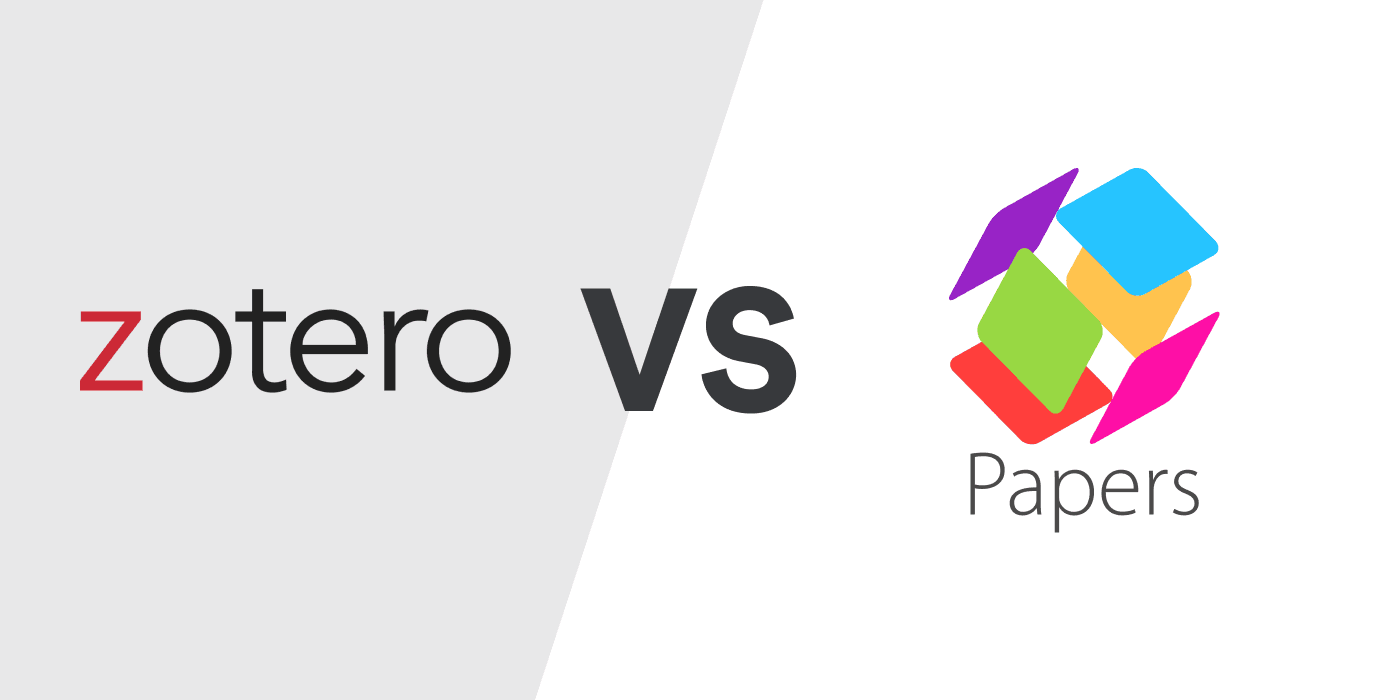
Selecting a reference management system that seamlessly aligns with your workflow is necessary for efficiently organizing and citing scholarly materials. However, the abundance of available options can make the decision-making process daunting.
To simplify this selection, we will examine two popular reference management solutions: Zotero and Papers.
Zotero vs Papers: Detailed feature comparison table
Here's a summary highlighting the key features of Zotero and Papers. Keep reading for a detailed comparison of the differences between them.
| Zotero | ReadCube Papers | |
|---|---|---|
| Platform Compatibility | 6/7 | 5/7 |
| Web | ||
| iOS | ||
| Android | Third-party apps only | |
| Windows | ||
| MacOS | ||
| Linux | ||
| ChromeOS | Set up Linux terminal | |
| Web clipper | 5/5 | 5/5 |
| Chrome | ||
| Edge | ||
| Safari | ||
| Firefox | ||
| Organize references Add references to folders within extension popup | ||
| Writing Platforms | 4/4 | 3/4 |
| Word on Windows | ||
| Word on Mac | ||
| Google Docs | ||
| Overleaf Live BibTeX integration with Overleaf | ||
| Data Import | 3.5/6 | 4/6 |
| Manual import with auto-completion Start typing in a title, URL, or DOI and the reference data will be filled automatically | ||
| Bulk data import Users can upload RIS, BibTeX, NBIB, and PDF files. | ||
| In-app literature search | ||
| Bulk import from web databases | ||
| Metadata extract from PDFs | Incomplete | |
| Create references from identifiers Generate references from DOI, PMC ID, arXiv ID, PubMed ID or ISBN | No PMC IDs | No PMC IDs or ISBNs |
| Data Export and Backup | 2.5/6 | 3/6 |
| BibTeX Export BibTeX files | ||
| RIS Export RIS files | ||
| Google Drive | ||
| Github | ||
| OneDrive | ||
| Full data export Export all bibliographic data, labels, folders, and PDF files with annotations | PDFs with annotations must be downloaded individually | |
| Sharing and Collaboration | 3/4 | 3/4 |
| Shared folders Integrated sharing that does not require set up of external folders in other cloud storage apps or databases | ||
| Unlimited collaborators No limit on the number of users who can access a shared folder | ||
| Collaborators can add, edit, and remove references | ||
| Share references with sharing link | ||
| PDF management | 2/6 | 4/6 |
| Custom PDF file naming | ||
| Sticky notes | ||
| Highlight annotation | ||
| Freehand drawing | ||
| Custom highlight colors | ||
| Free text annotations Write anywhere directly on pdf | ||
| Library management | 6/10 | 6.5/10 |
| Labels Also called tags | ||
| Folders | ||
| Subfolders | ||
| Starred items Also called favorites. Automatic filtering of important references displayed in UI | ||
| Notes | ||
| Duplicate detection Easily spot duplicates in your library | ||
| Detect incomplete references Automatic filtering of incomplete references | ||
| Auto-update reference metadata Get reference data updates automatically | PDF or identifier required | |
| Find full text PDFs | ||
| Bulk editing of references | ||
| Library search | 5/6 | 5/6 |
| Full-text PDF Search Include full text in search | ||
| Exact phrase search Over library (fields and full-text pdfs) | ||
| Author search Search author field | ||
| Notes search Include notes in search | ||
| PDF annotations search Include PDF annotations in your search | ||
| Highlight search terms in search results | ||
| Citing | 3/4 | 3/4 |
| Copy citation to clipboard | ||
| Choose citation style (Word, Google Docs) | ||
| Cite from library (Word, Google Docs) | ||
| Cite from online search | ||
| LaTeX Support | 2.5/3 | 2/3 |
| Copy BibTeX to clipboard | ||
| Create custom BibTeX key pattern | Third party plugin needed | |
| BibLaTeX support Export .bib file with BibLaTeX fields | ||
| Support and Community | 1/3 | 1/3 |
| Community forum | ||
| Customer support via in app chat | ||
| Customer support by email | ||
| Pricing | ||
| Free version (e.g., short-one time project) | Up to 300MB cloud storage for PDFs free | 30 day free trial |
| Academic user subscription price | $120/year for unlimited cloud storage | $130/year for unlimited cloud storage |
What is Zotero?
Zotero is an open source citation management tool. It is maintained by the Corporation for Digital Scholarship.

What is Papers?
Papers by Readcube is a reference management application, developed by Digital Science. It is aimed at academic and industry researchers.
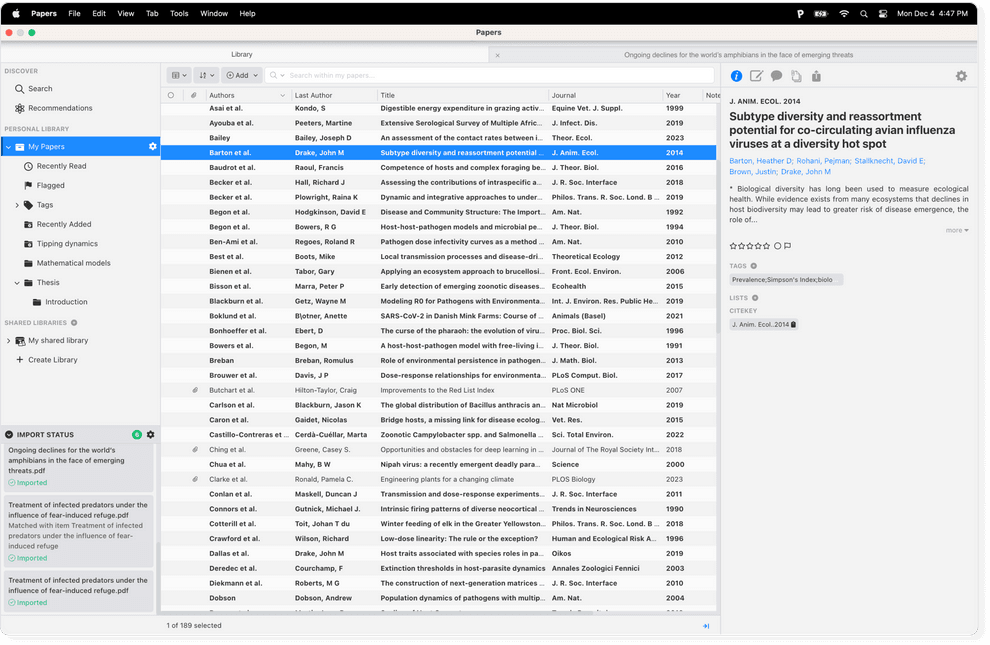
Zotero vs Papers: 3 factors to consider
When deciding between Zotero and Papers, several factors come into play. But your decision will hinge on a few key elements:
Cost. Zotero is free to use, you can download and install the desktop app and begin using immediately. Alternatively, you can begin using Papers with a 30 day free trial, but to continue using it, you need to pay a subscription fee of $130 per year for a pro license.
Cloud storage needs. If you create a free account in Zotero, you get access to the web app and up to 300MB of cloud storage for free. But if your cloud storage needs exceed 300MB, you need to pay for additional storage, starting at $20 per year for up to 2GB. Unlimited storage costs $120 annually. In contrast, Papers comes with unlimited cloud storage for the price.
Platform compatibility. Both Papers and Zotero are available on Windows and MacOS, but only Zotero is available for Linux machines. Both tools provide official iOS apps, and Papers has an Android app. Zotero’s Android apps are maintained by third parties.
Zotero vs Papers: Papers has in-app online literature search whereas Zotero does not
Unlike Zotero, Papers by Readcube has in-app online search features, which are handy if you do extensive online searching and prefer not to have to switch to your browser to find relevant journal articles.
Papers has two major functions for finding articles within the app:
- The “Search” option allows you to search for papers online that you can add to your library. But you can’t restrict searches to specific databases like PubMed.
- The "Recommendations" feature under “Discover” suggests recommended articles based on the papers in your library. You can restrict the recommendations to be based on a specific list of papers in your library or on your entire library.
You can sort your search and recommendation results in order of relevance, citation count, Altmetric score and publication year, in ascending or descending order.
It’s easy to add any results of interest to you to your Papers library via the “Add to Library” button that appears when you select an article.
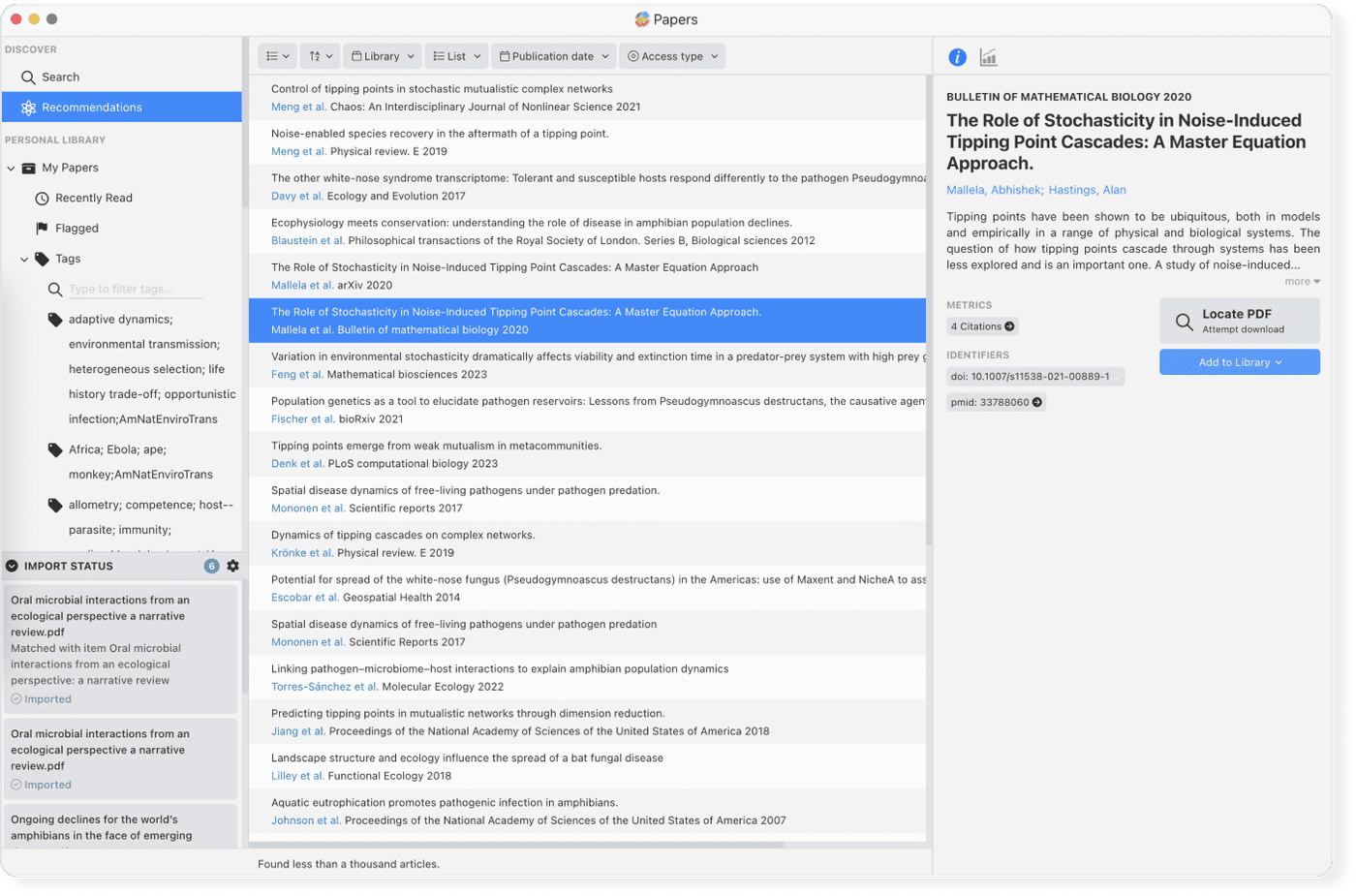
Zotero vs Papers: Zotero groups have more flexible sharing permissions than shared libraries in Papers
Both Zotero and Papers have sharing features for collaborative research projects.
- Papers offers shared libraries where users can share PDFs with other Papers users. You can create up to 5 shared libraries as part of the academic plan.
- Zotero has the groups feature that allows you to share reference collections with others. But you need a Zotero account, which comes with Zotero cloud storage, to set up a group. The number of groups you can set up is limited to the capacity of your Zotero storage if you choose to share attachments as the group owner.
Shared libraries in Papers have a single, broad permission level for your collaborators.
- You can share PDFs (and other attachments) with other Papers users.
- All library members can add and delete documents, but only the owner can rename or delete the library.
- All notes and PDF annotations are shared and can be viewed and edited by all members of the library. There is no read-only permission available.
- All shared libraries are private by default, although you can choose to share links to the references via a publicly available URL by creating a public list.
- Changes are synced in real time facilitating collaboration.
When you choose to share a library with others, you need to trust your collaborators because they can remove references from the shared library and they can view and edit any PDF annotations you’ve made.
If you require more granular permissions for collaborators and advanced features for your library, as a leader of a research group or lab for example, the Enterprise plan is a better option because you can change permission levels for group members, and have access to advanced features like APIs and SSO.
In contrast to shared libraries in Papers, Zotero groups have flexible sharing permissions available to all Zotero users. You can:
- Create public open, public closed, and private groups.
- You can choose whether to share attachments in public closed and private groups (you can’t share attachments in public groups).
- Choose whether members can view and edit library items in the library settings.
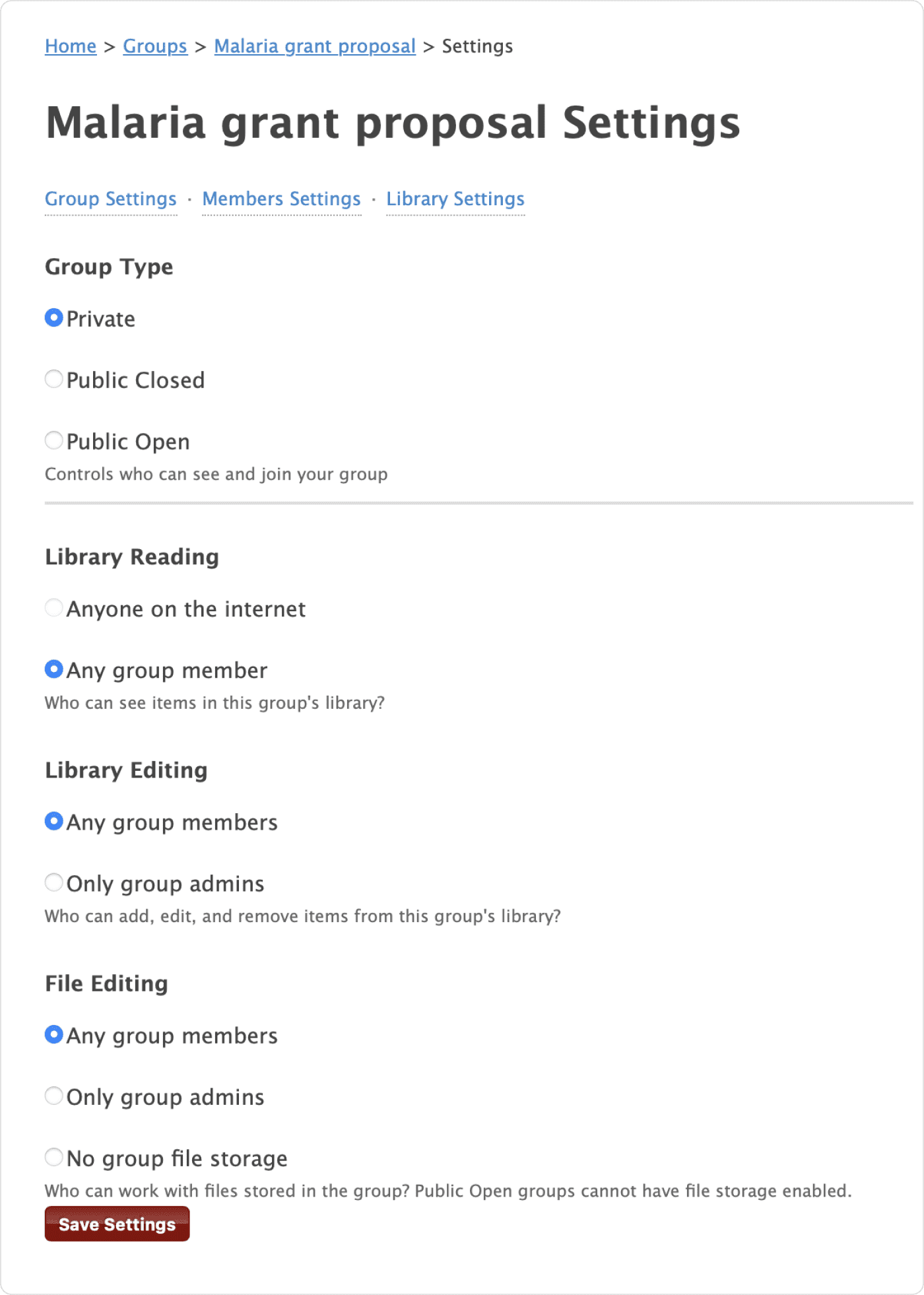
Zotero vs Papers: Papers has a better UI than Zotero but Zotero has duplicate detection
Both Zotero and Papers have the traditional layout of a reference management tool: a left sidebar with collections of references, a grid-like layout of papers in the center pane, and reference information on the right-hand side. But the UI of Papers is cleaner and more modern than Zotero’s.
In Papers you can:
- Customize the layout of the center pane. You can change between the default compact table view and a list view that makes reading the reference titles easier.
- Switch between light and dark modes.
- You can mark references as favorites by flagging them and find recently read references easily in the left hand pane. Unread papers are shown in bold in the center pane.
Zotero doesn’t offer these features. It’s interface prioritizes functionality over aesthetics. But in contrast to Papers, it does display duplicate items in your library (although Papers can detect duplicates on import of items).
Zotero vs Papers: How do their PDF viewers compare?
Both Zotero and Papers offer PDF viewers for reading of publications within their apps.
Zotero’s PDF reader is simple but functional. The interface is cluttered, with the list of annotations on the left, the PDF document in the center, and the information and notes panels, although these can be closed by double-clicking on the icons for a simpler reading experience.
- The PDF annotation features are basic—you can create highlights and sticky notes, and draw rectangles around text and figures.
- You can comment on and tag annotations, create standalone notes, and annotations can be readily exported to other formats.
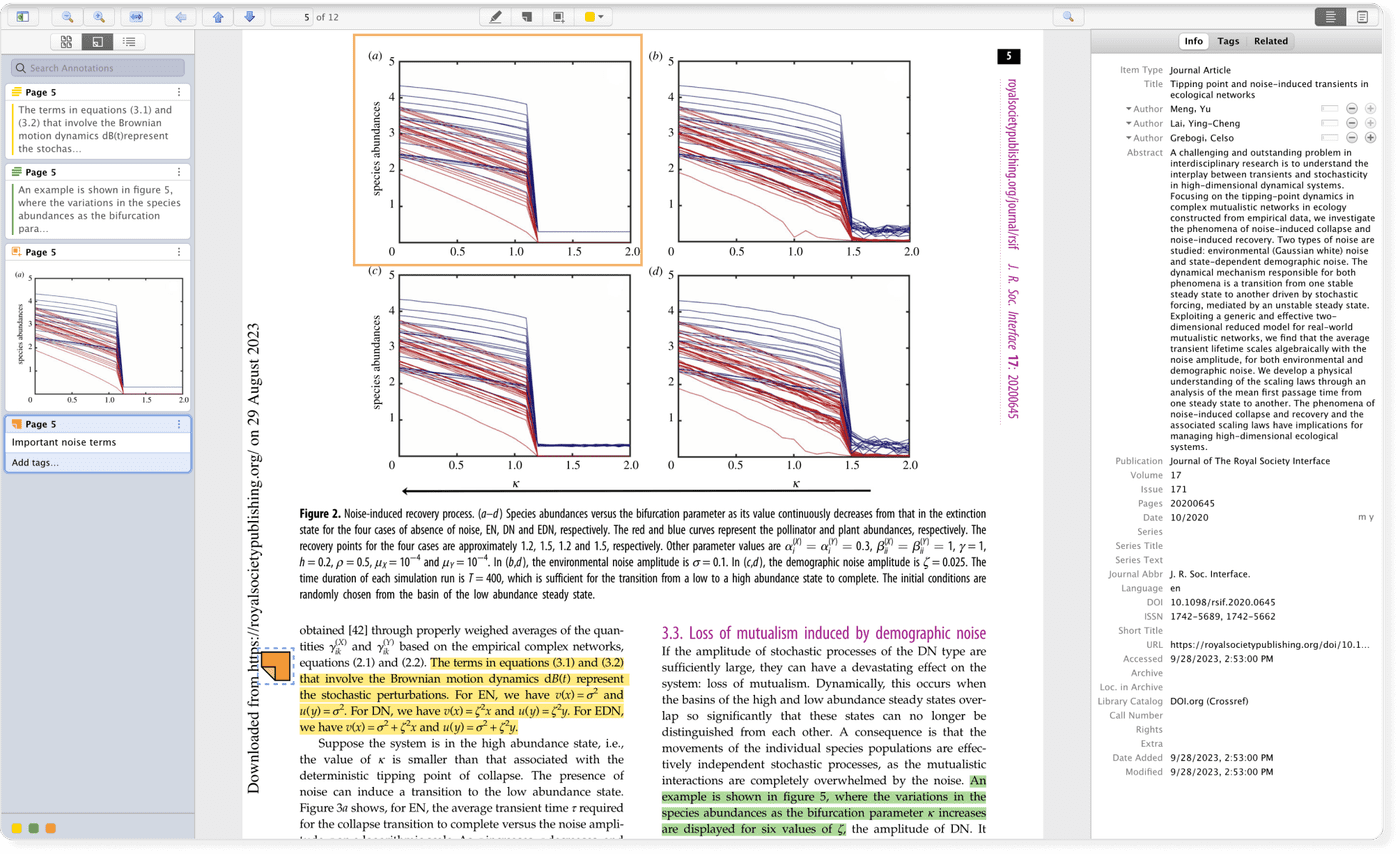
Papers, on the other hand, offers a pleasant PDF reading experience. Its annotation features include:
- Highlights
- Sticky notes
- Underlines
- Freehand annotation (with various line widths and opacities)
- Strikethroughs
You can:
- Save articles to your library directly as you read the PDF
- Easily undo annotations via the undo button in the bottom left
- View PDFs in dark mode
- Export your notes.
The PDF reader menu has many options at your fingertips like creating citations, exporting BibTeX entries, and viewing your notes and annotations in one place. You can even copy your annotations from the menu.
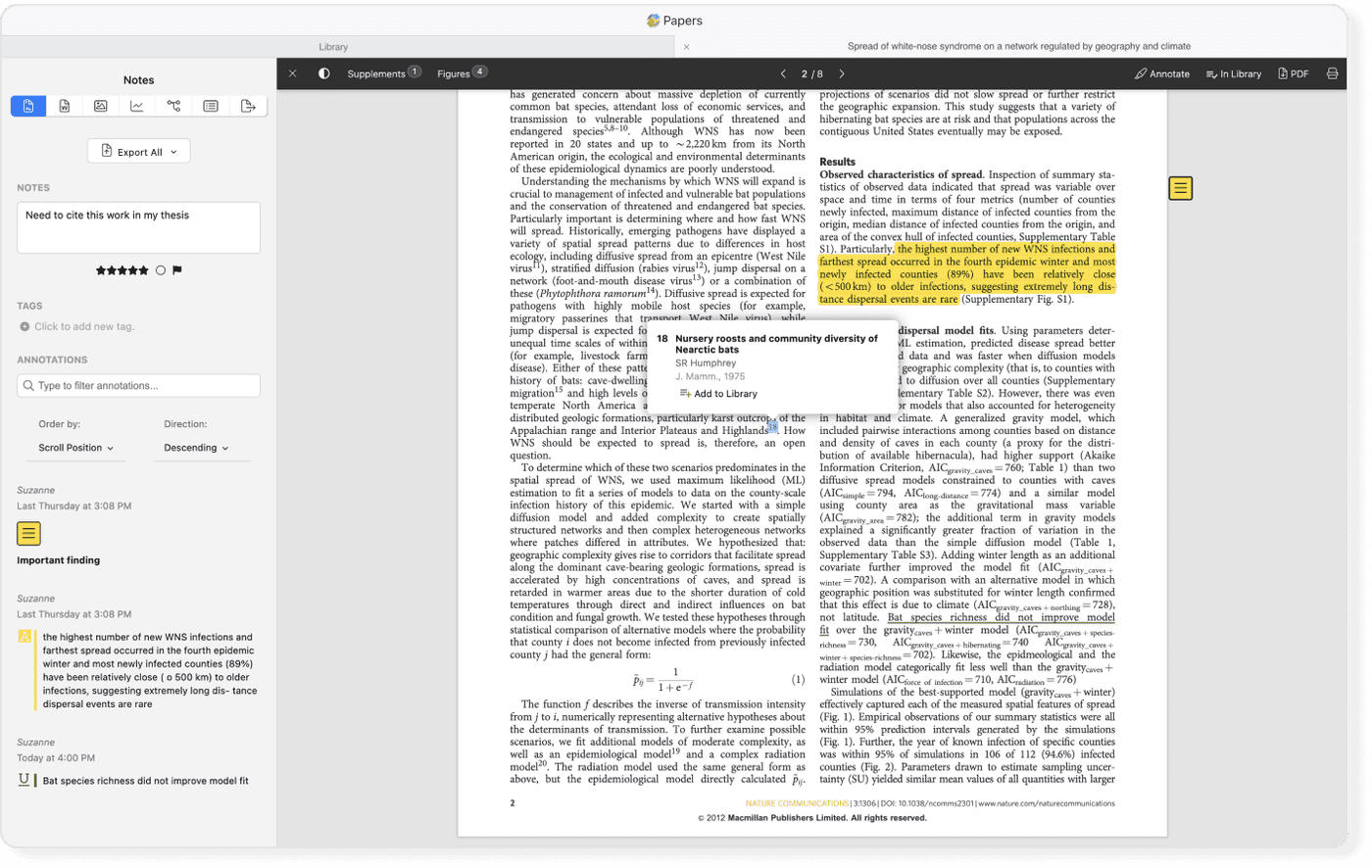
Zotero vs Papers: Zotero has a wider range of BibTeX features but it’s easier to work with BibTeX in Papers
Both Zotero and Papers offer support for LaTeX and BibTeX users.
In Papers, all basic and advanced LaTeX and BibTeX features are bundled with the platform—no extra downloads are required.
In contrast, if you require advanced LaTeX and BibTeX features in Zotero, you need to download and install a third party plugin, called Better BibTeX. The Better BibTeX for Zotero plugin lets you:
- View BibTeX citekeys by displaying them in the reference info panel
- Copy LaTeX citations from the Zotero grid view via Settings > Export > Quick Copy and select “Better BibTeX Quick Copy: \cite{citation keys}”, select references and drag and drop into your chosen application
- Set your own BibTeX citation key pattern for your citekeys with extensive field marker combination options.
It’s easier to work with BibTeX entries and keys in Papers than in Zotero. In Papers, you can copy the BibTeX entry of a reference by selecting it, right clicking and selecting “Copy BibTeX entry”. The BibTeX key can be copied directly from the reference details panel via the clipboard icon.
In Zotero, to copy a BibTeX entry, you need to go to Settings > Export > Quick Copy and select “BibTeX” or “Better BibTeX” if you are using the plugin. Then you can select the references and drag and drop the BibTeX entries to your desired application.
A downside is that you can only set one export option to “Quick Copy” at a time in Zotero. For example, if you want to create a BibTeX entry and then get the LaTeX citation for the same reference, you have to go to Settings > Export and change the “Quick Copy” settings via a dropdown menu.
But unlike Papers, you also have the option to send references to BibLaTeX format in Zotero.
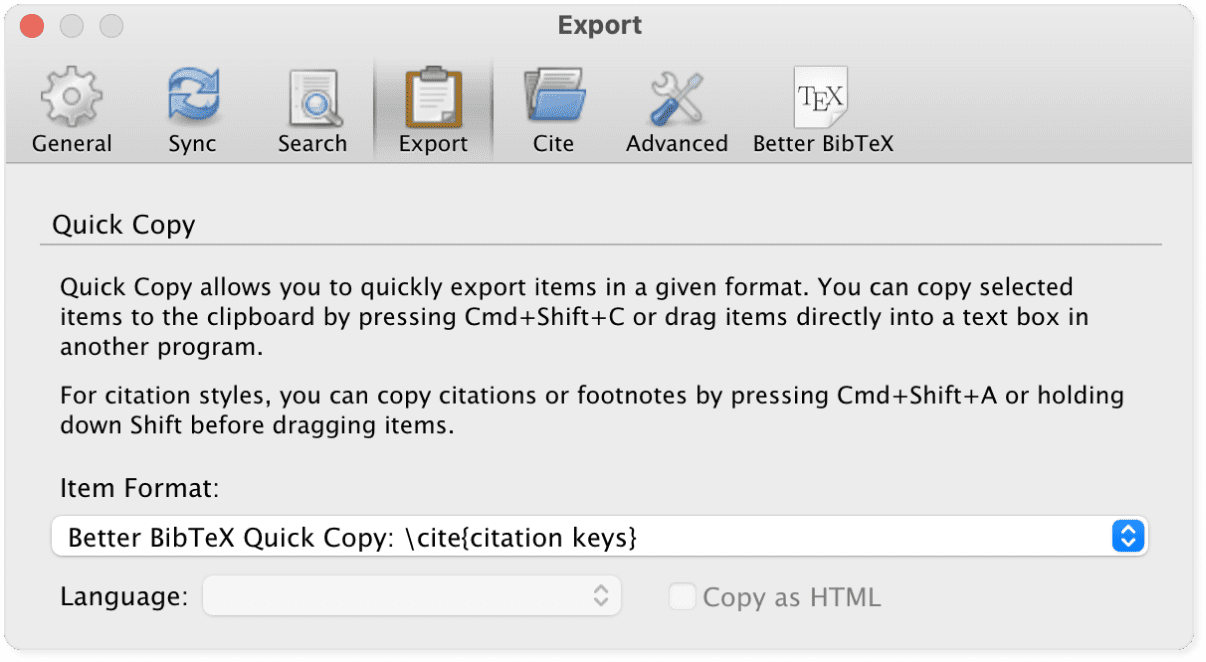
Better BibTeX for Zotero offers you greater flexibility in the citation key patterns that you can set than the Papers citation key generator. You can use different combinations of field markers (called functions) to build your own pattern, e.g., multiple forms of the author field, title, date, and page numbers.
In Papers, on the other hand, you can create key patterns based on combinations of first and last author names, publication year, journal title, reference title and DOI. If you require a larger range of field markers or would like different delimiters to a period, then Better BibTeX is more suitable.
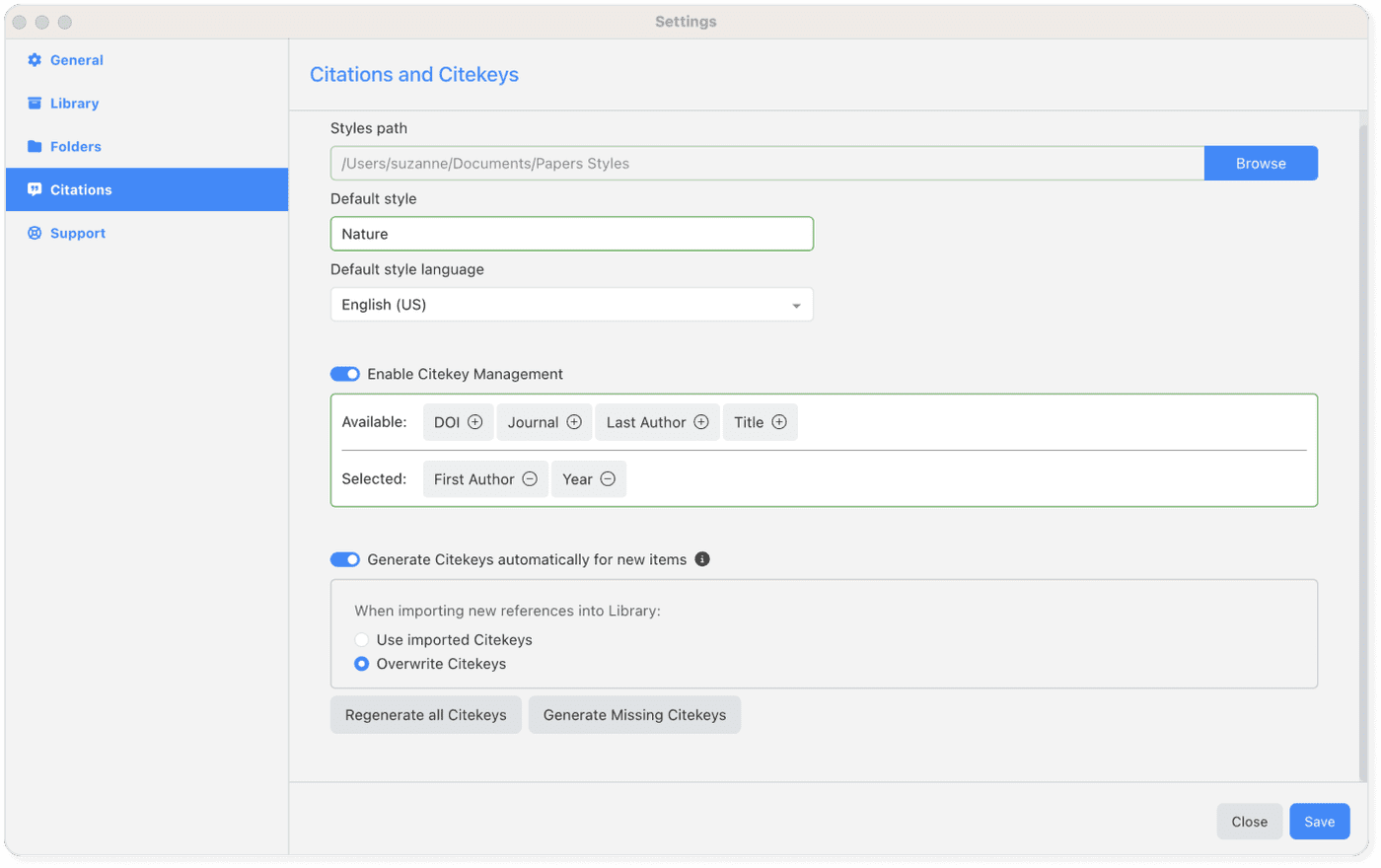
The Papers citation key generator lets you choose to generate keys for new references imported to your library with your selected pattern, and when importing references, you have the option to use the imported citation keys or to change them to your selected pattern.
In Papers, you can also easily update all keys in your library with the “Regenerate all Citekeys” button or update entries that are missing keys via “Generate missing keys”. But unlike Better BibTeX for Zotero, it isn’t possible to update the keys of a selected set of references.
Zotero has an automatic live integration with the LaTeX platform Overleaf whereas Papers does not. But Better BibTeX citation keys are not automatically synced to Overleaf.
Zotero vs Papers: Which is better?
The choice between Zotero and Papers by Readcube will come down to your workflow preferences, specific needs, and your priorities.
Zotero is the better choice if:
- You often need to resolve duplicate references
- You require flexible sharing features for free
- You like having advanced customization options for LaTeX documents.
Papers by Readcube is the better choice if:
- You regularly search online databases in your work
- You’d like to read papers in a full-featured PDF viewer
- You need powerful and accessible BibTeX features.
The best way to find out is to try both and see which aligns better with your workflow and needs.
Related reading
⇨ Migrate your Zotero library to Paperpile